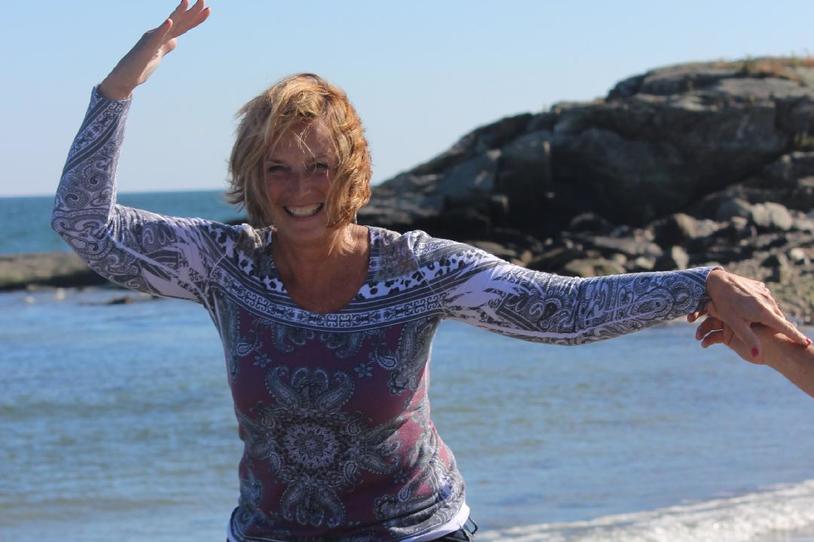
When I was newly diagnosed with Parkinson’s disease (PD), my neurologist recommended I practice yoga; I’ve been doing it ever since. Despite my "Downward Dog" looking like a dejected puppy, I stick with it because I know it's good for me.
A few disclaimers: I have been living with Parkinson’s disease since 2009. I am 66 years old (no spring chicken!). I am not an athlete; I am just an average person who is trying to keep her PD at bay.
So, what do you need to do yoga at home? Really, just yourself. But for the poses I’ve outlined below, it’s helpful to start with:
- Sticky mat
- Chair — for extra support; use one with non-slip leg bottoms (or rubber caps)
- Comfortable clothes
- Bare feet
Now, let’s begin! The photos in the gallery align with the poses described below. I chose to demonstrate poses that focus on balance and core strength, which are beneficial for those of us with Parkinson’s. I also share resting poses to complete at the end of your practice, or whenever you need to destress.
Balance
It’s important to work on keeping our balance to avoid falls. The following can help improve and strengthen balance. Yoga poses that require balance create a sense of calmness while also requiring intense focused. For these reasons, I have found yoga to help with my concentration and memory.
We begin with Mountain Pose, the foundation of all balance poses. When we have a good foundation with good posture, we feel more stable.
Photo 1: Mountain Pose
Ears over shoulders, shoulders over hips, hips over ankles, arms down and open
Photo 2: Warrior Pose
Legs are wide apart, toes on the front leg are facing front, toes on the back leg are turned to 90 degrees, arms are outstretched from the shoulders, front to back
Photo 3: Side Angle Triangle Pose
From Warrior Pose, place your arm on a knee, or challenge yourself by bringing an arm to the floor.
Photo 4: Modified Side Angle Triangle Pose
If your balance is challenged, place a chair in front of you and hold onto the back for support. Or, move closer to a wall. Sometimes just placing your fingertips on a chair or wall gives that little encouragement needed to steady oneself.
Photo 5: Tree Pose
Find a focal point and hold your gaze there. Raise one foot and place it just at the ankle of the standing leg. For a more advanced option, raise the non-standing leg further up the standing leg, being careful not to put pressure on your knee.
If you’re having trouble balancing, try this exercise: Extend one leg in front of you and tap your toes as if your leg is a clock hand. Go from 1 to 6 o'clock with your right leg and then use your left leg to go from 12 to 6 o’clock. The next time you go around the clock keep your foot a few inches off the ground.
Photo 6: Airplane Pose
From Tree Pose, you can transition into Airplane Pose or a Figure 4 Pose (see following photo). For Airplane Pose, continue to focus on a set point to help with balance.
Photo 7: Figure 4
In Figure 4, you can place your hands on your hips or if your balance will allow, bring your hands together in prayer.
Photo 8: Wide-Legged Standing Forward Fold (Step 1)
Start with legs wide and arms outstretched.
Photo 9: Wide-Legged Standing Forward Fold (Step 2)
Bend at the waist and fold forward. Be careful — especially if you have low blood pressure — to come up slowly.
Core Strength
Keeping your core strong is key to good balance. The following will help build core strength.
Photo 10: Plank Position
There are many additional variations and exercises to build off the plank. For example, from a plank position, go down to your elbows and then rise back up on your hands.
Photo 11: Side Plank
From a plank position, try lifting one arm and holding the pose on one side before switching.
Photo 12: Downward Dog
From plank position, you can easily transition into Downward Dog by raising your hips.
Photo 13: 3-Legged Dog
From Downward Dog, try lifting one foot for a 3-Legged Dog.
Photo 14: Boat Pose (Step 1)
Here we go! Let’s row, row, row…
Photo 15: Boat Pose (Step 2)
Place your hands behind your knees to help lift your feet off the ground, while you lean back and use your abs to balance.
Photo 16: Boat Pose (Step 3)
Use your core strength to keep your legs up and extend your arms out the side.
Resting Poses and Meditation
Besides improving your balance, the next best thing about yoga are the resting poses and meditation exercises.
Photo 17: Child’s Pose
This resting pose helps to center and calm the body and mind. It’s also a great stretch.
Photo 18: Shavasana (a.k.a. Corpse Pose)
At the end of the yoga practice, lie on your back in Corpse Pose. You can turn down the lights and either relax or meditate. In the photo, I am using my props to support my neck and back which is an option.
Photo 19: Seated Meditation
Meditation can be done lying down or seated. When I had my deep brain stimulation surgery, I used the technique of self-meditation to help keep me calm. (Listen to MJFF’s recent podcast on strategies including mindfulness and meditation to care for yourself and your loved ones with PD.)
Photo 20: Namaste
To close the practice, we come to a seated position, place the hands together at the heart and bow the head.
These examples only touch the surface of all that yoga has to offer — its poses, its benefits. It has helped me and is my way of fighting back against my Parkinson’s progression. I hope you enjoy these poses while staying safe and active at home.
Join The Michael J. Fox Foundation’s online study Fox Insight to tell researchers what type of exercise you do and how it's helped you manage life with Parkinson's. Fox Insight could lead to new insights and areas of study, including on the impact of exercise on Parkinson's disease.
Photo Gallery
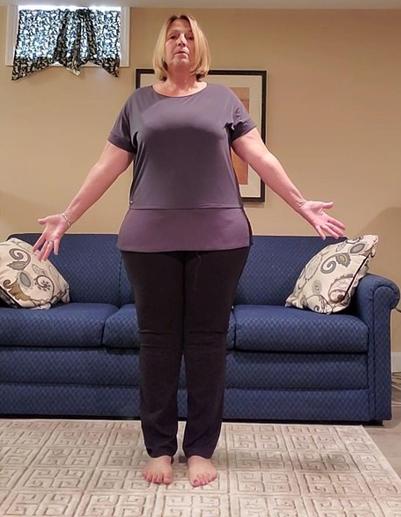
Mountain Pose.
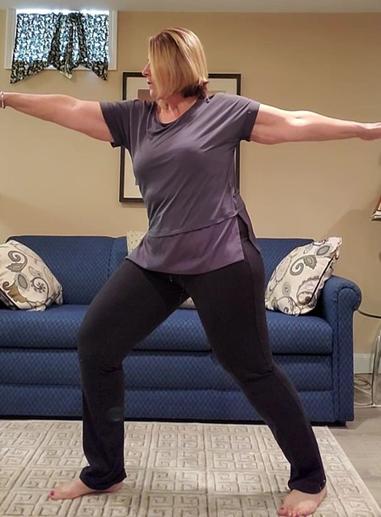
Warrior Pose.
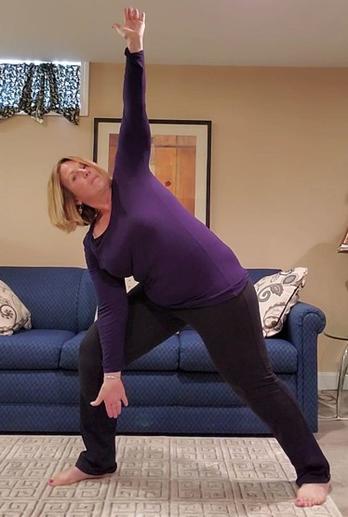
Side Angle Pose.
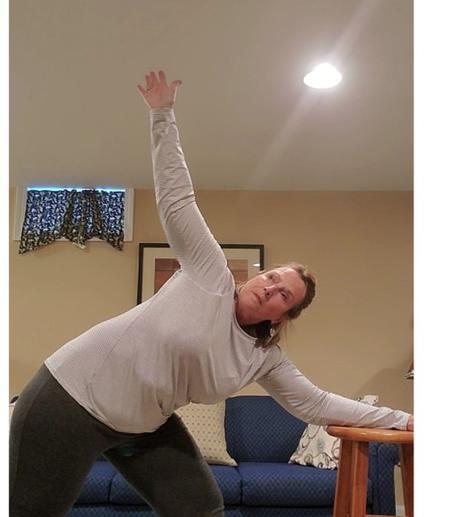
Modified Side Angle Triangle.
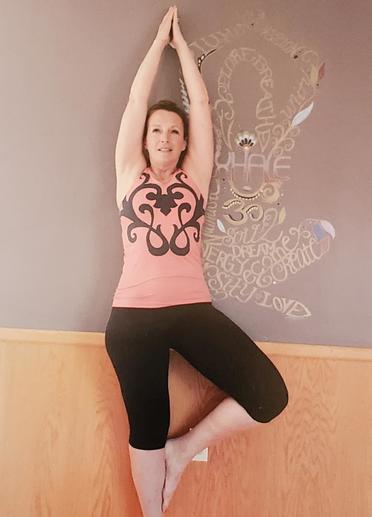
Tree Pose.
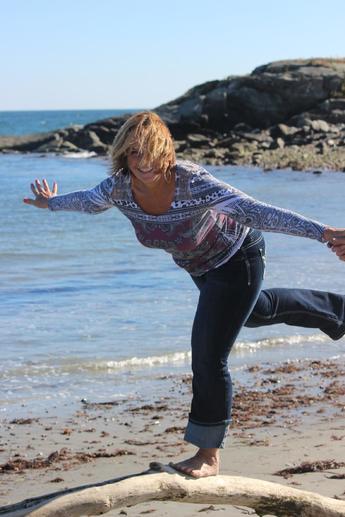
Airplane Pose.
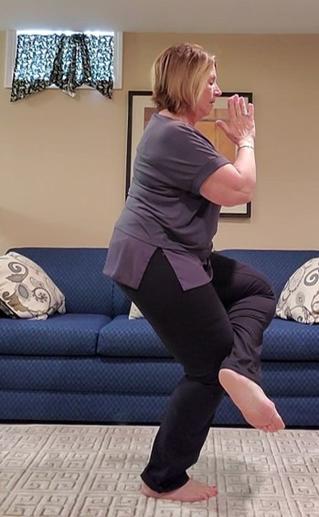
Figure Four.
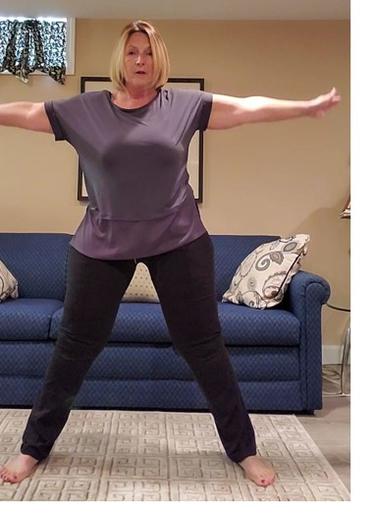
Wide Legged Standing Forward Fold.
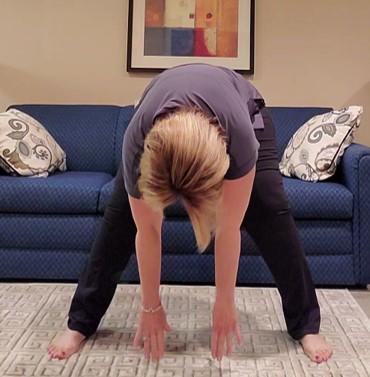
Wide Legged Forward Fold.
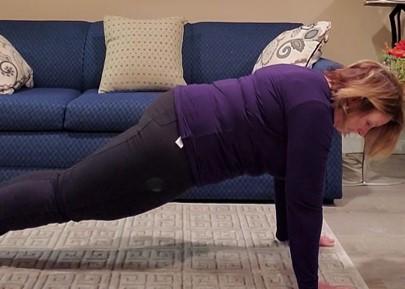
Plank Position.
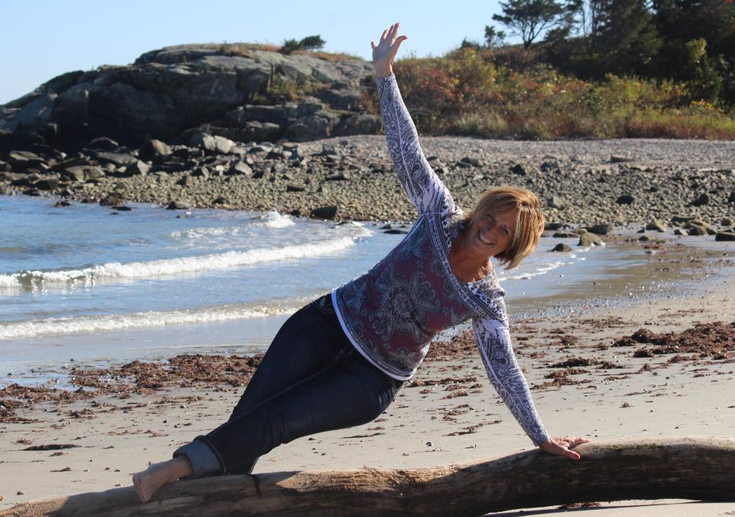
Side Plank.
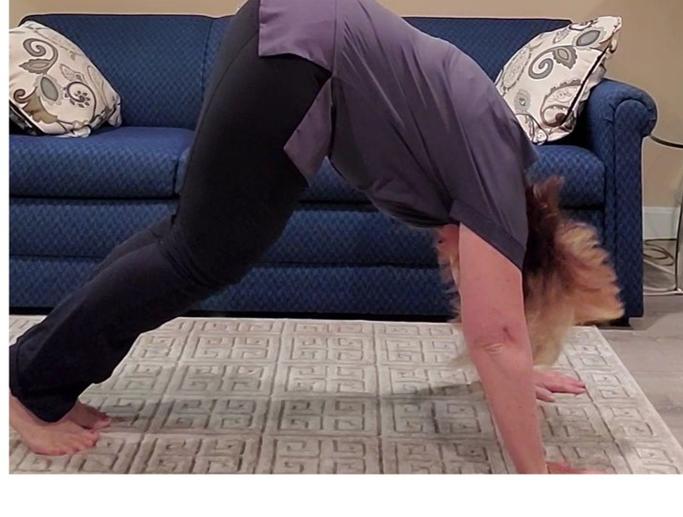
Downward Dog.
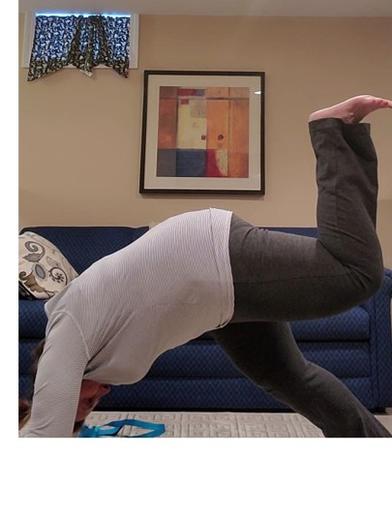
Three Legged Dog.
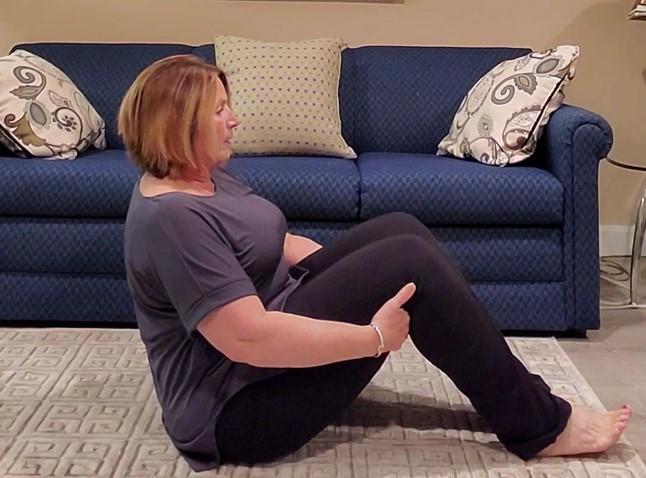
Boat Pose -- Part One.
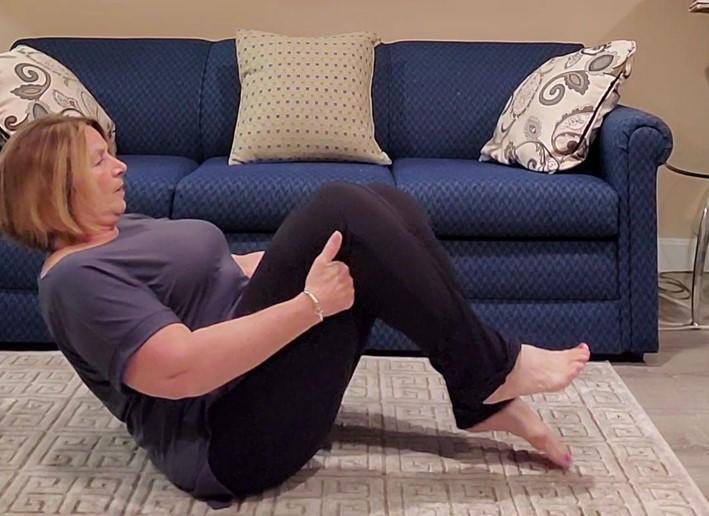
Boat Pose -- Part Two.
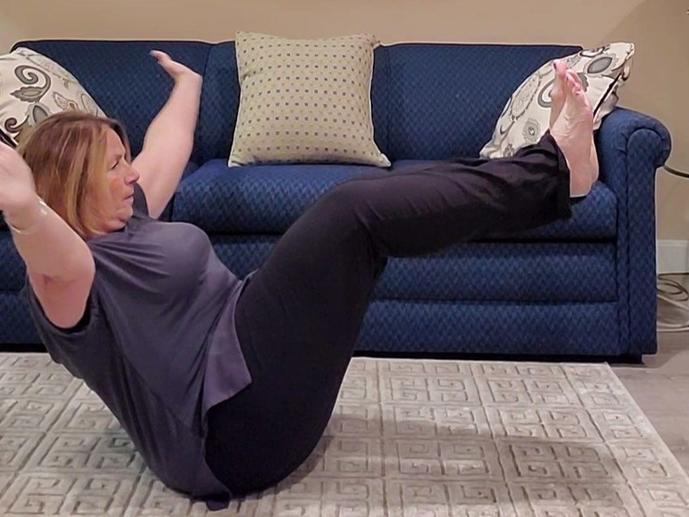
Boat Pose -- Part Three.
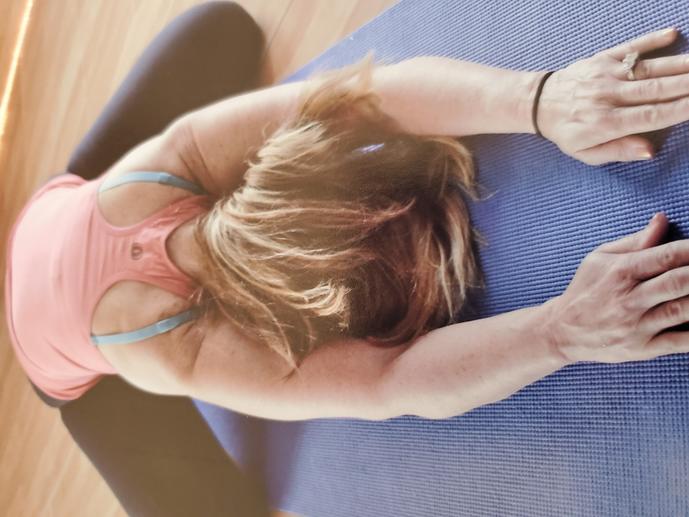
Child's Pose.
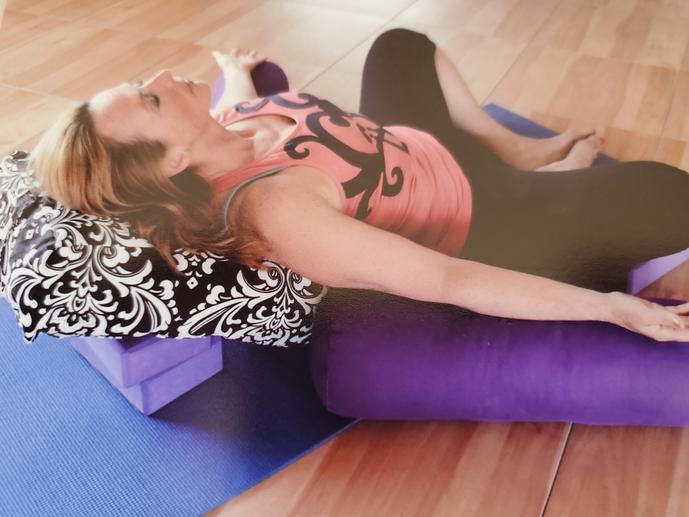
Shavasana.
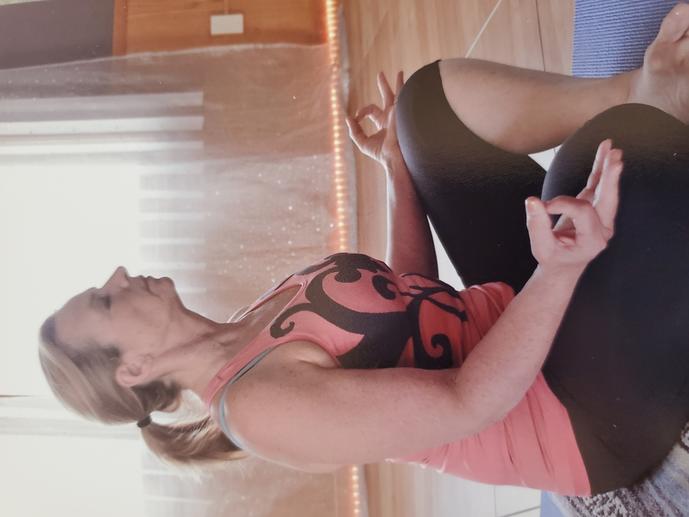
Seated Meditation.
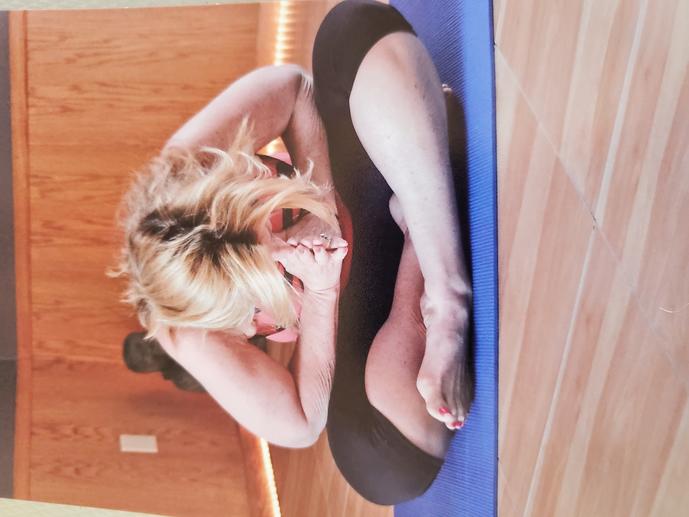
Namaste.